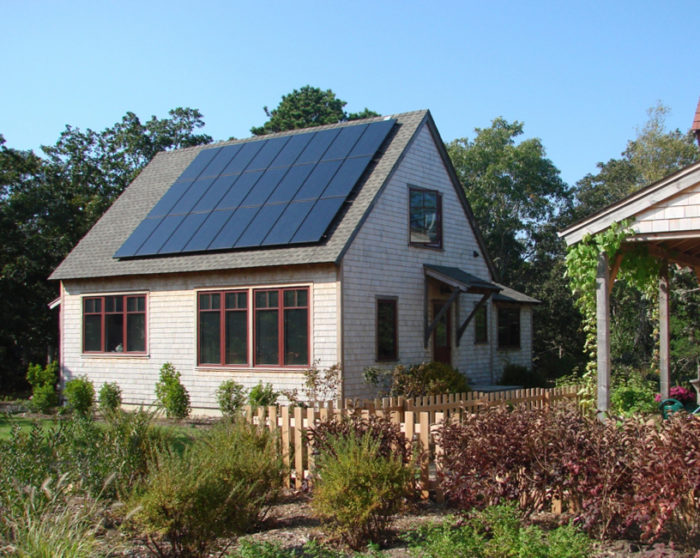
Image Credit: South Mountain Company
There are a lot of things not to like about fossil fuels. Most obviously, the burning of oil, natural gas, propane, and coal releases huge quantities of carbon dioxide into the atmosphere, where it traps heat through the greenhouse effect.
Fossil fuels were created over hundreds of millions of years when vegetation accumulated in oxygen-poor conditions and did not fully decompose before being trapped underground. Heat and pressure gradually turned that organic matter (and its stored carbon) into these various carbon-rich fuels. When we burn those fuels to heat our homes, generate electricity, or power our cars, the hydrocarbon reacts with oxygen, converting the stored carbon into carbon dioxide, which causes global warming.
But even if burning fossil fuels didn’t cause the release carbon dioxide and cause global warming (just for a moment, let’s say those climate change deniers were right), there would still be plenty of reasons not to burn these fuels.
Air pollution and military intervention
The extraction of coal, oil, and natural gas is highly damaging to the environment. From mountaintop removal of coal in West Virginia to open-pit mining of tar sands in Alberta, Canada, to the newest fracking practices that are thought to be contaminating aquifers from Pennsylvania to North Dakota, the fossil fuel extraction business isn’t pretty.
There’s air pollution from burning these fuels. Natural gas isn’t so bad (except from a global-warming standpoint), but coal combustion generates significant particulate emissions and sulfur dioxide, causing acid rain, and both coal and oil combustion may release nitrous oxides and contribute to ground-level ozone and smog production. According to a 2010 report from the American Public Health Association, just the healthcare costs associated with air pollution from vehicles amounts to $50-80 billion per year in the U.S. (that’s as much as 60¢ per gallon of gasoline consumed); other estimates put that cost even higher.
When we buy fossil fuels we generally send money out of the community to support large corporations and foreign governments. That’s money that doesn’t stay in the local economy.
And then with oil there’s the issue of how much it costs to protect our access to this resource — fundamentally, that’s what took us into Iraq. We are spending billions of dollars per week in the Middle East, not to mention the thousands of American soldiers’ lives that have been lost and the lives of untold thousands of Middle Easterners.
Can we live without fossil fuels?
If we accept that it would be a good thing to get off fossil fuels, how do we do that? It isn’t easy. Our modern American society has been built on a foundation of inexpensive fossil fuels. Our dependence is huge and deep-seated. Eliminating that dependence will be a mammoth undertaking — but, I believe, a necessary one.
While there are a lot of ways to approach this challenge, I’ll focus here on the micro-scale: what we as individuals can do to get off fossil fuels. This week I’ll look at our houses; next week, transportation.
Here are some strategies:
1. Insulate your house. By dramatically improving the energy performance of your house, you can reduce the heating loads enough that other, non-fossil-fuel heat sources can realistically satisfy those needs. Adding robust amounts of insulation when building a new house isn’t so hard — the extra cost can be at least partly offset by lower costs for heating and air conditioning systems — but with existing buildings it’s a huge challenge.
A so-called deep-energy retrofit may cost $100,000 or more for a typical home. It involves adding extra insulation to either the interior or exterior of the existing insulated shell of the house, upgrading to triple-glazed, R-5 windows, and significantly air-tightening the house.
If you don’t significantly boost the energy performance of your home, you can still wean yourself from fossil fuels — but it’s a lot harder.
2. Convert to a non-fossil-fuel heating system. Wood heat may be an option in some areas, but if everyone started heating with wood, air pollution would get a lot worse and we would quickly deplete forests. I generally consider this a realistic option only in very rural areas and areas not prone to weather inversions (atmospheric conditions trap air pollution in valleys).
Pellet stoves and larger pellet boilers are also an option — one that’s gaining a lot of ground in northern Europe and beginning to generate interest in the U.S. Wood pellets are made by compressing sawdust and other wood waste (sometimes whole trees) into small pellets that look like rabbit food. Pellet stoves and boilers are a lot cleaner-burning than wood stoves and older-style wood boilers, because the pellets are burned under careful conditions with supplied air that ensures very complete combustion.
If you get heating loads low enough, you can consider electric heat as a realistic option. But for electric heat to be an affordable option, a heat pump should be used rather than standard electric-resistance baseboard heaters. With heat pumps, the electricity is used for moving heat from one place to another — such as from the outside air (with an air-source heat pump) or the ground (with a ground-source or geothermal heat pump) into your house. For every one unit of electricity consumed by a heat pump, two to three units of heat (sometimes even more) are delivered. We can think of the heat pump as being 200% to 300% efficient, though it’s not actually a measure of efficiency.
With heat pumps, I’m a big fan of the new generation of air-source heat pumps that are often referred to as minisplit heat pumps but are more correctly called VRF (variable-refrigerant-flow) heat pumps. These are made by such companies as Mitsubishi, Daikin, and Fujitsu. They perform almost as well as ground-source heat pumps and they cost a whole lot less, because digging trenches or drilling wells is not required.
3. Convert to renewable electricity. As astute readers will note, simply switching from gas or oil heating systems to heat pumps only helps wean us from fossil fuels if the electricity is produced from other than coal or natural gas power plants. Because the electric grid is so distributed, the electrons that flow through the grid come from many sources, and about half of the nation’s electricity currently comes from coal, with most of the rest produced by natural gas, nuclear power, or hydropower. The last two options are fossil-fuel-free, but in most places the electricity can be assumed to come from a mix of energy sources, with a significant portion of that from fossil fuels.
To be sure that one’s electricity is from non-fossil-fuel sources you can install your own renewable electricity system — with solar electricity or photovoltaics (PV) usually being the most practical option — or you can buy electricity that is designated as coming from a renewable energy source. I like the idea of installing your own PV system so that you can track your production and consumption and be sure that your consumption is being offset by solar electricity. Various tax credits, incentives, and dropping PV costs have made this option increasingly feasible in recent years.
Sourcing renewable electricity from the utility company is only an option if the utility company has a renewable energy program. Our company, BuldingGreen, pays about 4¢/kWh more for electricity through the Cow Power program of Central Vermont Public Service Company; my wife and I do the same at home. That higher rate helps to pay for on-farm methane generators that have been built on at least a half-dozen large Vermont farms.
Next week, we’ll look at the more challenging issue of shifting to non-fossil-fuel transportation.
Alex is founder of BuildingGreen, Inc. and executive editor of Environmental Building News. He also coauthored BuildingGreen’s special report on windows that just came out. To keep up with Alex’s latest articles and musings, you can sign up for his Twitter feed.
Weekly Newsletter
Get building science and energy efficiency advice, plus special offers, in your inbox.





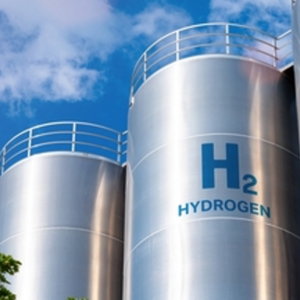
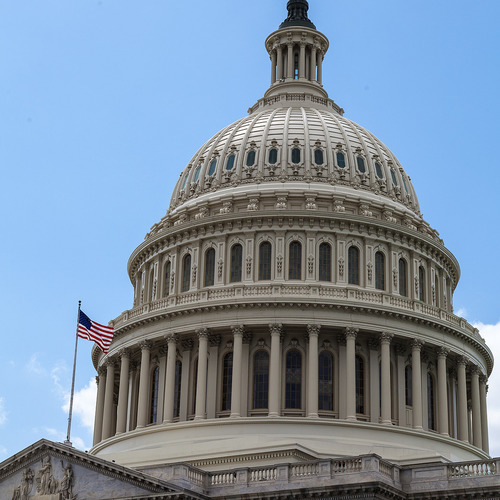
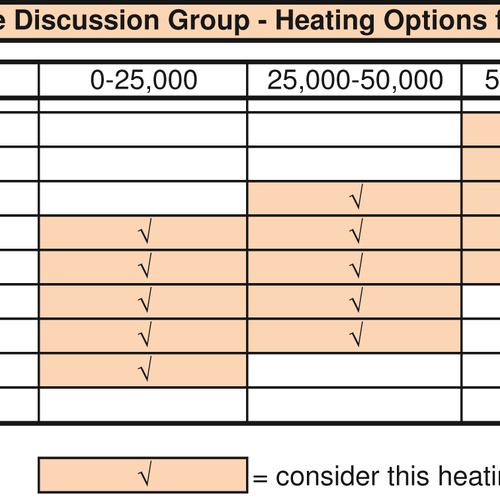
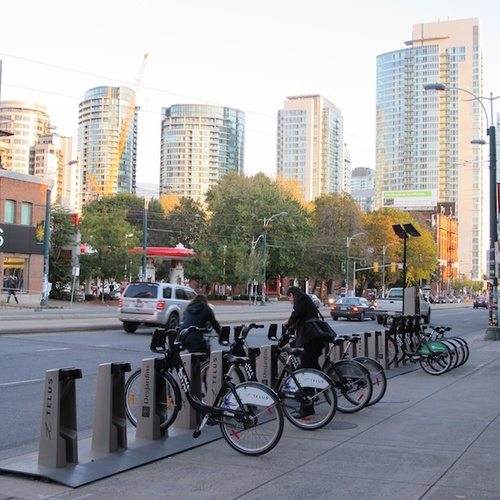






16 Comments
Minisplit efficiency
Minisplit efficiency depends a lot on your climate. In US climate zone 4, the newer/better minisplits can hit ground source heat pump efficiency with seasonal average COPs in the mid-3s, but in US climate zone 5 hitting a seasonal COP of 2.5-2.8 is more realistic. In US climate zone 6 it might be a struggle to beat 2.0 for an average (but that's still WAY better than the 1.0 of resistance heating.)
The final report for the NW Ductless Pilot Program sponsored by the BPA is due to be released in July, but there is a lot of published results already available online, including this:
http://www.neea.org/research/reports/E12-237_Combined.pdf
See table 33, p.50 (p63, in .pdf pagination) A map of the regions listed in
that table can be found on p.8 (p.21 in the .pdf pagination), All regions
except for Willamette and Puget Sound are in US climate zone 5.
In US climate zone 6 and even parts of zone 5 there are times when it's 15F or lower and the outdoor humidity is high enough to reduce the functional output of the mini-split to zero (spending most of it's time in defrost mode), so 100% backup capacity would be required for installations in some colder climates.
But if the house is insulated and tight enough to be heated with a mini-split even at the average winter temp, the size & expense of 100% back up capacity at the design-condition load isn't very expensive.
On a cost/benefit basis it's often cheaper & better in climate zones 4 & 5 to retrofit the building envelope to bring the design condition load under 3 tons and buy a mini-split than spending the money on ground source heat pumps. Subsidies skew the economics of that widely though- a sharp pencil is needed to determine which is the better call on any particular project.
alex,
you may be interested
alex,
you may be interested to know that there was a near zero-carbon passivhaus built in galway, that was presented at the PHI conference in hannover. the system sports a solar DHW used for space heating and domestic hot water, and supercharging a superinsulated inter seasonal energy storage (ISES - water tank).the tank was placed outside of the thermal envelope (due to water table), and because of this suffered some tremendous losses (if i recall, ~60%). however, it was still able to supply 72% of all space heating needs - in a year that saw some of the coldest temperatures in over a generation. i talked with the presenter afterwards, and he believes that by better addressing the tank losses and utilization of heat pumps - they should be nearly zero carbon without the utilization of PV, and even in harsh climates with 10 month long heating seasons (or sweden, where their next project is underway).
Response to Mike Eliason
Mike,
How does one achieve "zero carbon without the utilization of PV"? Does the building depend on wind-generated electricity? I assume that the house has electric lighting, refrigeration, and perhaps a TV or a computer.
Sounds like the start of a PassiveHaus/Net-Zero Energy argument
Make that "nearly zero carbon heating & cooling without PV", which isn't the metric as net-zero energy for the house.
The operating carbon footprint of Net Zero Energy houses is still greater than zero, and likely to be higher than some PassiveHouses. The actual carbon content depends on how much is drawn from the local grid. Even when net-positive on power production, it doesn't always fully displace the carbon emissions from when the house needs to draw from the grid. It's not a simple-arithmetic accounting exercise.
But with heat pumps, as the grid gets cleaner, so does the house. A mini-spit with an annual heating COP of 2.5 on a mostly ~30% efficiency gas fired grid has about the same carbon footprint as heating with an 80% gas furnace. But when wind and hydro pick up a significant share of the grid baseload, as it will be in about 5-10 years for the Eliakim's Way residence in the picture the rooftop PV on those houses will be the summertime peak-load shaving gravy on the top of an already low-carb energy diet.
Martin,
You are right, that's
Martin,
You are right, that's 'nearly zero carbon' per the odd 2016 Code for Sustainable Homes (UK) definition (at the time the report was written, there was no definition in Ireland), which doesn't include plug loads and a few others I am drawing a blank on. Zero Carbon Heating might be a better term...
Also, I'm amazed at the number of folks in the energy biz that don't comprehend what Dana referenced regarding NZEBs not having a carbon footprint of zero...
Response to Mike Eliason
Mike,
You're right, of course, that calculating carbon footprints is enormously complicated, and that we all have one. That's why I have always been very leery of the word "sustainable."
The typical person who is building a new house in the U.S. is investing tens of thousands of dollars -- often hundreds of thousands of dollars -- in materials. You can't do that much shopping without leaving a messy carbon footprint.
And it's also true that any grid-connected home (with or without a PV array) has a carbon footprint simply due to the fact that it depends on the grid. The grid's footprint is, indeed, large and messy.
Alex, Excellent article, but I would reorder your points:
#3 first, #1 second; #2 third. Here's why.
I have spent the better part of 18 years working on improving the energy efficiency and then reducing the carbon footprint of my home. As a rank amateur, I have made almost every mistake in the book - and should probably write a book on that issue! ( "wrong things in the wrong order", etc.).
At the same time, however, I have reduced gas and electricity consumption by 70% and the carbon footprint from those two sources by over 90%. Here are some of the data:
Year Therms kWh EII Mt. GHG
1993E ~1,300 ~6,500 ~16.6 ~13.0
1996 822 6,950 11.6 9.5
2001 661 8,278 10.3 9.7
2002 672 10,809 11.4 11.6
2004 323 12,751 8.3 11.2
2008 195 10,588 6.1 8.9
2009 164 9,056 5.2 7.6
2009wp 164 9,056 1.0
2011 161 8,548 5.0 0.9
2012E 150 7,500 4.4 0.8
From 1994 to 2008, I worked on improving insulation and mechanical efficiency and was able to drop my home's CO2 footprint from ~13 to 7.6 metric tons. Thanks to utility deregulation in Illinois, I was able to purchase wind power in 2009, a splendid development because our local utility produces 80% of its power from coal. Note that with wind power, I was able to drop my carbon footprint from 7.6 to 1 metric ton in only one year. (I have a ground source heat pump which is a "carbon killer app" when paired with renewable energy.)
In states where citizens can buy wind power, point #3 in your article should be point #1. One other point: I am now paying less for wind power than I would for coal-fired power from the local utility.
Note: EII stands for Energy intensity index, which in this is case is kWh/ ft/ sq. per year for gas and electricity.
Alex great article. Window R-value
Alex, thanks for such great article on getting off fossil fuels. I recently built a small (1000 s.f.) all electric house and put 3.6 kW of PV on the roof. I wish I had known about Intus windows with their superior quality and U-values at such an affordable price, similar to double pane pricing. They have a wide range of U-values that meet and exceed Passive House standards (U-0.12 - R-8.33 whole window). I wish they had been available when I built my house.
Nevertheless, I was able to make it through a winter with one cord of wood with comfortable temps ranging from 68-80 even with 10 degree outside temps. My electric bills were from $20 - $50 / month for everything else. And this summer will be $8.91 CMP minimum charge for grid tied homes. I'll go into next winter with a surplus of watts and be able to use them with my electric heaters.
I think the one thing that people can focus more on is building smaller. People tell me they are going to build a small house and then I ask them how small is it? Oh, 2,500 sqft. Does it have a full basement? Yes. (2,500 + 1250 = 3750) That's not small in my book. I've spent a lot of time in Europe and a majority of people have really small flats or small houses and if they have a car it's really, really small. Why do we need such big homes in America?
On your article next week can you explain the aging batteries of a Prius. I have one (2004) and I'm wondering what will need to be done when my batteries reach their expected lifespan. Thanks
On aging hybrid batteries
Jason,
Thanks for your comments. I'll get into the battery issue next week--but it's a challenge. We have a 1983 Honda Civic Hybrid with ≈160K miles and I'm hoping the batteries hang on long enough to get us to some more choices (or proven reliability) of plug-in hybrid vehicles.
On wind power:
What happens when customers collectively "buy" more wind-source KWH than the production side produces? Does the power company just make a pile of extra money providing grid-supplied power from other sources to make up the difference?
100% Green Certified RECs prevent double dipping.
Dick,
I buy certified Renewable Energy Credits or RECs. This system prevents double dipping. With Green-e certified RECs, there is only one end-user for every kWh of renewable energy that is produced.
The more important issues are these. First, wind power is now cost competitive with coal-fired power, if not already less expensive, and will be clearly less expensive by the end of the decade, even if we don't require coal to pay for its high health costs and environmental damage. The energy content of coal continues to decline whereas wind turbines are more efficient, have increasing capacity factors, and are better sited and managed.
Second, wind is beginning to constrain price increases in electricity because it is almost always the "price taker" in spot electricity markets. When a wind farm has excess electricity to sell in the spot market, it can beat out every other source of energy because the operational cost for wind power is about 1 cent per kilowatt hour. See: http://www.greentechmedia.com/articles/read/winds-future-ally-better-transmission/
Third, we have not even begun to tap our best and most accessible wind resources which are the Great Lakes waters and the Mid-Atlantic bight. I should add that Germany intends to generate 80% of its electricity from renewable sources by 2050 with the lion's share coming from wind farms.
All in all, the old dictum to "conserve, conserve, and then shift to renewables" is no longer valid for homeowners who can purchase wind power in competitive electricity markets.
Even so, I hear this outdated mantra again and again. It's time for the green building trades to catch up with changes in electricity markets.
Response to William Rau
William,
I agree with you. Your make an astute point: "All in all, the old dictum to 'conserve, conserve, and then shift to renewables' is no longer valid for homeowners who can purchase wind power in competitive electricity markets. Even so, I hear this outdated mantra again and again."
This point applies to roof-mounted PV systems as well. It is no longer true that installing a high-R wall system (lots of wall insulation) should always precede investing in PV. PV has gotten cheap, so an investment in PV can often yield a faster return than an investment in some envelope improvements.
We all need to rethink our assumptions -- and we all need to do the math before we invest.
Net Zero and Zero Carbon Home
We recently completed construction on a net zero and zero carbon home in Hermosa beach. Go to http://www.greenideahouse.com if you would like to learn more about the specifics of the design and construction. We are also offering home tours and a class on sealing the crawlspce in the near future. Feel free to email me with any questions.
Wes
Martin, Thanks for extending my argument.
I am a strong advocate of retrofitting old homes to the highest "justifiable" insulation standards and, in my own home, have attempted to eliminate every energy hog I can find. However, if you want to cut your home's carbon footprint, the quickest, simplest, and often the cheapest option is to (1) switch to wind or PV electric power and then convert to heat pumps for hot air and water and air conditioning. This powerful combination - renewable energy & heat pumps - will yield more than a 90% reduction in a home's carbon emissions.
MY calculations for 7 homes in Bloomington-Normal, IL indicate that home owners can drop the carbon footprint of their homes by 50% to 75% (depending on the therm-kWh ratio) in just one year's time and save money in the process just by switching to wind power. As noted, wind power from my alternative energy supplier (BlueStar Energy: $0.058 / kWh) is now cheaper than coal-fired power purchased from the local utility (Ameren: $0.063 / kWh).
Switching to renewable power is a no-brainer. I hope all the good folks at Green Building Advisor's will start highlighting this new development. Your articles on heat pump water tanks, and Alex Wilson's article here are very heartening developments.
Air sealing, heat pump and "base" costs
We have been trying to cut our carbon footprint for a number of years. Last October we had a Mitsubishi Mini split installed. The fact is that it heated our house without backup heat all year. We had the heat pump set at 70F ( the lowest we can set) and we set our baseboard programmable thermostats set at 61F. They never came on. The closest we came was when the night time temperature went down to -14F and our bedroom was at 16F in the morning. It recovered during the day. The inside unit is in the living room and the lowest temperature was 18F.
Interior temperatures
Roger,
Can you clarify on the interior temperatures? Did you mean 16 and 18 degrees Celsius?
Log in or create an account to post a comment.
Sign up Log in